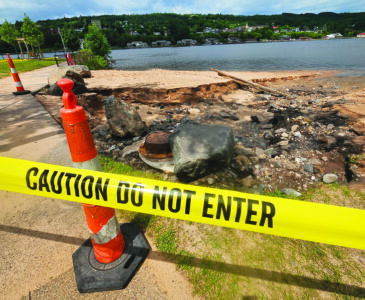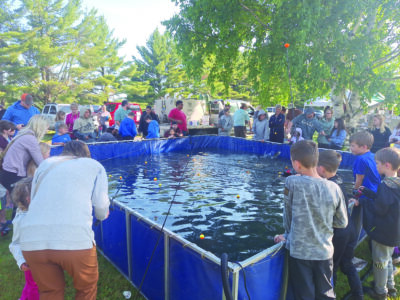Protect against low winter temps

Kurt Hauglie/Daily Mining Gazette In order to avoid hypothermia and frostbite, adequate clothing must be worn when going out into very cold temperatures. Today and Sunday wind chills are expected to be about minus 20 degrees.
HANCOCK — With the early onset of wintery conditions locally, it’s important to take precautions to guard against possible winter-related physical problems.
This past week, temperatures have been significantly lower than normal for this time of year in the Midwest, including the Upper Peninsula. Combined with strong winds, the wind chill has been dangerous.
Wind chill is described as the colder the air temperature and the higher the wind speeds the colder it will feel on your skin if you’re outside. Wind chill can lead to hypothermia and frostbite, both of which can cause severe damage. Hypothermia can lead to death.
Barbara Auten, Western Upper Peninsula Health Department Director of Public Health and Education, said if not addressed quickly, hypothermia can have dangerous consequences.
“Hypothermia occurs when your body looses heat faster than it can make it,” she said.
With hypothermia, Auten said brain functions can slow significantly, leading to the inability to think properly, and speech can become slurred. Drowsiness, memory loss, confusion and severe shivering can occur.
Someone with hypothermia may engage in behavior, which can make their situation worse, Auten said.
“They don’t think anything is wrong with them, and they don’t recognize danger,” she said.
Babies are at a higher risk of becoming hypothermic than healthy adults, Auten said. Signs of hypothermia in infants include bright red skin, which is cold to the touch, and sluggishness.
Auten said other people at high risk of becoming hypothermic are the elderly, who may not be getting enough to eat, or who don’t have adequate clothing, those who are outdoors for extended periods without proper clothing, homeless people, and people who abuse alcohol or drugs.
How soon hypothermia sets in depends on the air temperature or wind chill, and how long a person is exposed to the cold, Auten said.
Hypothermia is possible even if it isn’t winter, Auten said. If a person is wearing wet clothing and the air is cool, hypothermia can occur, even above 40 degrees.
If a person is showing signs of hypothermia, including a drop in body temperature, medical help should be sought as soon as possible, Auten said.
“If (the body temperature) is below 95, that’s an emergency,” she said.
If it’s not immediately possible to get to medical care, Auten said it’s important to get the person as warm as possible as soon as possible.
Getting a hypothermic person out of wet clothing and covered up with blankets will help, Auten said. Giving the person warm — not hot — beverages helps, also. If possible, emerse the person in warm, not hot, water. If the water is too hot, it can cause burning, which the person may not be able to perceive because of the slowed down brain functions and loss of sensitivity of the skin.
“Skin to skin contact is the best way to warm someone up,” she said.
In the most severe cases, Auten said hypothermia can cause unconsciousness.
“That’s an emergency situation,” she said.
Auten said frostbite is an injury caused by freezing, which can occur when parts of the body are exposed to extremely cold air. How soon it sets in also depends on the temperature and length of exposure.
“The first signs are redness and pain,” she said.
If fingers or toes become numb or painful, Auten said that could signal the onset of frostbite, which can cause tissue damage if not addressed quickly.
“In severe cases, it can lead to amputation,” she said.
Visible indicators of frostbite include grayish-yellow skin color, and waxy skin, Auten said. Severe frostbite affects the circulation.
“People with poor circulation are at a greater risk of frostbite,” she said.
If frostbite is suspected, Auten said the person must be made warm as soon as possible. If the feet are frostbiten, the person should not walk because more damage can be done. The affected area should not be rubbed, either.
“That can also cause some damage to the tissue,” she said.
The best way to prevent hypothermia or frostbite is to stay indoors, Auten said.
“If you don’t have to go out, don’t,” she said.
If it’s necessary to go out in the cold, Auten said adequate clothing, which covers the head, face an mouth, should be worn. Unfortunately, some people don’t take those precautions.
“People don’t use good judgement sometimes,” she said.





